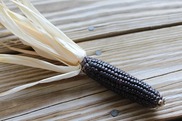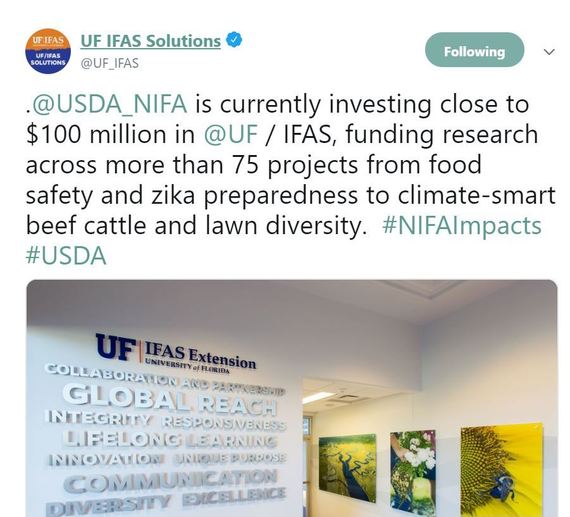|
Having trouble viewing this email? View it as a Web page.

|
|
|
Fresh From the Field is a weekly album showcasing transformative impacts made by partners supported by the National Institute of Food and Agriculture.
Editor: Falita Liles April 25, 2019
|
|
Success Stories

Phenols in Purple Corn Fight Diabetes, Obesity, Inflammation in Mouse Cells
Scientists at the University of Illinois (U of I) have developed new hybrids of purple corn containing different combinations of phytochemicals that may fight obesity, inflammation, and diabetes, according to a new study in mice.
The pericarp – or outer layer – of purple and other brightly colored corn kernels also may provide an alternative source of colorants for food products, giving corn producers another value-added product from their crop.
NIFA supports this research project through Hatch Act Funds.
Read more at the U of I News Bureau.
|
News Coverage

Consumer Economics Programs Reducing Debt in Tennessee
Because they spend too much and save too little, many Tennesseans will not have enough money to live securely throughout life. University of Tennessee Extension programs have focused on skills to increase savings to build assets, reduce dependence on credit, and discharge debt. Counties across Tennessee reported 95,656 total direct educational contacts. Follow-up data indicates that among extension clientele participating in consumer education programs, more are attempting to save and reduce debt. The annual estimated economic impact of clienteles’ saving totaled more than $19 million with debt reduction estimates approximately $6,418 million. The total estimated impact of Extension Tennessee Saves adult and youth programs as well as youth financial simulations on Tennesseans’ saving increase and debt reduction was $26 million.
NIFA supports this outreach through the Smith Lever Act Capacity Funds.
Contact Dena Wise or Ann Berry, extension specialists, at dkwise@utk.edu, aaberry@utk.edu for more information.
|
Library

Solving the Mystery of Fertilizer Loss From Midwest Cropland
Farmers cannot predict their annual corn harvest with certainty, but with the help of new research from Michigan State University (MSU), they can now pinpoint specific parts of their fields that consistently produce either good or bad yields. Not only will this save them time and money, it will solve one of the most widespread environmental problems facing crop-producing regions – nitrogen loss.
Dr. Bruno Basso, MSU professor of ecosystems science, and his team discovered that almost all fields have certain areas with consistently low or high yields. That means much of the fertilizer added to low-yielding areas will go unused and be lost to the environment. At the same time, unused nitrogen is lost to the environment rather than taken up by the crop. The study shows that lost nitrogen from 10 Midwest states totals nearly $1 billion of wasted fertilizer and 6.8 million metric tons of greenhouse gas emissions annually.
NIFA supports this research through the Agriculture and Food Research Initiative.
Read the journal article in Nature.
|
Tweet of the Week
#NIFAIMPACTS

|
|

NIFA’s mission is to invest in and advance agricultural research, education, and extension that solve societal challenges. NIFA’s investments in transformative science directly support the long-term prosperity and global preeminence of U.S. agriculture. To learn more about NIFA’s impact on agricultural sciences, visit www.nifa.usda.gov/Impacts, sign up for email updates or follow us on Twitter @USDA_NIFA, #NIFAImpacts.
USDA is an equal opportunity lender, provider, and employer.
|
|